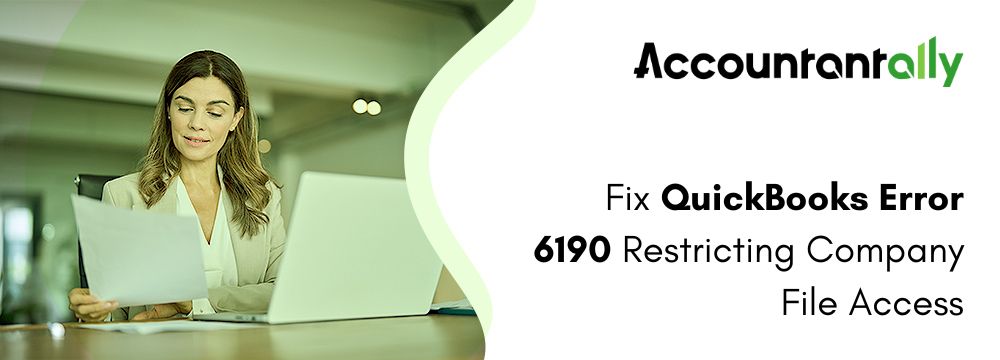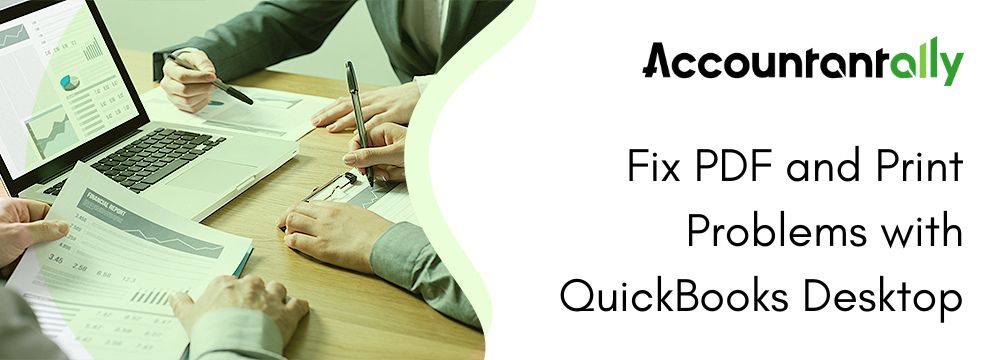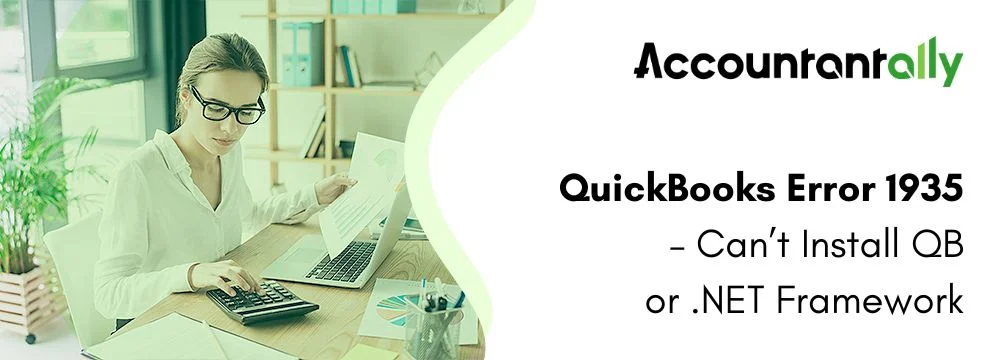The company file error QuickBooks Error 6190 stops users from opening the company file. When QuickBooks attempted to access the company file (6190, 816), an error notice stating: An error occurred, alerting the occurrence of the error, appears on the screen.
Experts say that error codes 6190 and 816 in QB most likely signal a problem with the multi-user network rather than the firm data file. Check out this thorough troubleshooting guide for all the tried-and-true methods to solve the error with ease if you’re looking for answers.
Status Codes which are Encountered with Error 6190
- -6190, -83: It is a computer, not the server that hosts the firm file.
- -6190, 816: While working in the corporate file, the user is not in multi-user mode; rather, they are in single-user mode. It’s conceivable that the company file (.qbw) and the transaction log file (.tlg) don’t match.
- -6190, -85: When a user works on a data file, they are on a single-user network rather than a multi-user network. There can be an inconsistency between the (.tlg) and (.qbw) files.
- -6190, -82: Working on the data file puts the user in a single-user environment as opposed to a multi-user one. Possible discrepancies between the company file (.qbw) and the transaction log file (.tlg) could exist.
- -6190, -1005: When you attempted to launch QuickBooks, an error occurred.
Causes of Error Code 6190, 816 in QuickBooks Desktop
The reasons for QuickBooks error codes 6190 and 816 in QuickBooks desktop are as follows. Let’s examine each one in turn:
- The server is not the machine that is hosting the data file.
- If the version of QuickBooks you use is out of date.
- If a portable or internet disc has the corporate file (.QBW).
- The files ending in.ND and.TLG are corrupted, missing, or damaged.
- QuickBooks installation that is damaged.
- The company file is not in the same location as it was saved.
- Incorrect hosting configuration.
- There is data corruption in the corporate file.
- Incorrect permissions for the folder.
- QuickBooks can’t open because of firewall or antivirus settings.
Troubleshooting to fix QuickBooks Company File Error 6189
These are the simple fixes for QuickBooks problem 6190 in general. Apply them in the specified sequence.
First Solution: Update QuickBooks Desktop
There are many advantages to updating QuickBooks Desktop. You receive improved security patches, bug fixes, and the most recent features. To update the program easily, just follow the procedures listed below.
- Once QuickBooks is open, select Help from the top menu.
- From the drop-down menu, pick Update QuickBooks Desktop.
- Proceed to the Update Now section and select the Reset Update option to proceed.
- Finally, press OK to confirm after selecting the Get Updates button.
If updating QuickBooks doesn’t fix the 6190, 816 issues in QuickBooks, move on to the next fix.
Second Solution: Open the QB File Doctor Utility
When it comes to fixing network and company file problems in QuickBooks, File Doctor is a useful tool. The steps below will walk you through running the File Doctor utility with ease.
First Step: Get QuickBooks Tool Hub and install it.
To begin, download and install QuickBooks Tool Hub on your computer. This will allow you to access and use the tools as needed.
Second Step: Utilize the File Doctor Utility.
- Launch QB Tool Hub, choose Company File Problems, and then click Run QuickBooks File Doctor tool. It should be kept in mind that the QuickBooks File Doctor tool requires a minute or two to launch. Try searching for QuickBooks Desktop File Doc and opening it manually if it doesn’t open.
- Continue by opening QuickBooks File Doctor and choosing your company file from the drop-down list. Choose Browse and look for the file if it’s not visible.
- To proceed, select only the middle option, Check your file, and then click Continue.
- Finally, to complete the process, input the QuickBooks admin password and press next.
Third Solution: Restart every workstation as well as the server
There are instances when a complete system reset is necessary. To restart the systems, carry out the following actions in the specified sequence.
- After restarting the server, turn on each workstation individually.
- Start QuickBooks Desktop on each workstation after it has been opened on the server machine.
The fact that you are able to access the company file now indicates that the problem has been fixed.
Forth Solution: Transfer the Firm Files to Your Local Hard Drive
Multi-user network problems may arise while attempting to access the corporate file (.QBW) on a portable or online drive. Thus, keep all QuickBooks files—including the company files—on your system’s local storage at all times.
Depending on how you open your company file, use the options below if you continue to receive the QuickBooks Desktop Error code 6190.
Solutions for opening the company file locally
This essentially indicates that you are attempting to access the company file on the same machine that QuickBooks is set up on. Let’s examine the below strategies to fix the 6190 and 816 QuickBooks company file errors in single-user mode.
First Solution: Done with the.ND and.TLG files
QuickBooks can access the company file through.ND and.TLG files. QuickBooks creates fresh, corrupt-free files when the.ND and.TLG files are renamed. Let us carefully carry out the following actions to rename these crucial files.
- To begin with, open the folder containing the company file.
- Search for files with the same name as the corporate files, but with the extensions.ND and.TLG at the end.
- company_file.qbw.nd
- company_file.qbw.tlg
- Additionally, select Rename from the menu when you right-click each file.
- After that, add the term “OLD” to the end of each file name. As an instance, company_file.qbw.nd.OLD.
Try opening QBDT once more and logging in to the corporate file. Go to the next fix if QuickBooks Desktop problem 6190 reappears.
Second Solution: Open Sample Company File
You can determine if the problem is with the placement of the company file or with the company file itself by opening a sample company file. Your company file is obviously broken if the sample company file opens. It merely indicates that the QuickBooks installation is corrupted if it fails to open and instead displays an error. To open an example corporation file, let’s take the actions listed below.
The No Company Open window will open; select open a Sample File. From the list of Sample Company files, select any file.
Proceed to the third solution below if the sample company file opens. But if it simply displays the same problem notice and won’t open, you might want to try fixing the QuickBooks installation files by doing the actions listed below.
Fix the installation files for QuickBooks
When utilizing, installing, or updating QuickBooks, you could run into issues because of a corrupted installation. The QuickBooks Desktop for Windows repair tool can be used by following the instructions below.
Step 1: Install and download the QuickBooks Tool Hub
You must first install the QuickBooks Tool Hub on the computer before you can use the repair tool. After that, to resolve the installation problems, you can access and use the repair tools.
Step 2: Launch the Quick Fix My Programme Utility.
As its name suggests, the Quick Fix My Programme utility immediately. Resolve common installation problems by doing a quick repair on QuickBooks. Let us proceed with the following procedures to smoothly operate the repair tool.
- Once QuickBooks is open, choose Programme Issues, then Quick Fix My Programme.
- Launch QuickBooks Desktop and choose the data file once the tool has finished.
Try using the QuickBooks Install Diagnostic Tool as the next step if the fault persists after using the QuickFix My Programme tool.
Step 3: Use the Install Diagnostic Tool for QuickBooks.
Common installation problems can be fixed by using the QuickBooks Install Diagnostic tool. Use the step-by-step instructions below to run this utility with ease.
- Select Installation Issues and QuickBooks Install Diagnostic Tool after opening the QB Tool Hub.
- Allow the tool to run; it can take up to 20 minutes to complete.
- Restart the computer, launch QuickBooks Desktop, and then open your data file after the program has finished.
Third Solution: Transfer the QuickBooks Enterprise File to the Desktop
You can determine whether the problem is with the corporate file or its location by copying it to the desktop.
Suppose the company file opens from the desktop. This could indicate that the area where you saved it might be corrupted. However, in case the corporate file remains unopened even after relocating, it could indicate that there has been data corruption.
Let’s examine the in-depth instructions below to find out how to duplicate the corporate file to the desktop.
- Once the folder containing the company file is opened, locate the file that ends in.QBW.
- To copy a file, right-click on it and choose Copy. Next, take the file to the desktop right-click anywhere, and choose Paste.
- Press and hold the control key to launch QuickBooks, bringing up the No Company Open display.
- Choose to Open or restore an already-existing business, navigate to the desktop, locate the company file, and attempt to launch it.
- Proceed to the next remedy if the company file still won’t open.
Fourth solution: Restore a Company File Backup
You can determine if there is a problem with the current company file (.QBW) by restoring a backup copy of the file. The fact that QuickBooks creates a new company file (.qbw) and uses the backup company file (.qbb) during the restoration process is another important detail. Let’s examine how to get a backup firm file back.
- Select Open or Restore Company from the File menu when you launch QuickBooks.
- Select “Restore a backup copy” and press “Next.”
- Choose Local Backup, and then press next once again.
- Look for your backup company file on your computer now; it should resemble this: [Your company name].QBBC.
- Choose a folder to put your recovered company file, and then click Open.
- When you’re all set, choose Save. Choose the right option for your needs if you encounter any messages about potentially overwriting your data. Remind yourself not to rewrite anything until you are certain you want to.
In the event that an error occurs during backup restoration, take the following actions:
- Check to make sure the company file isn’t being hosted on your PC.
- Navigate to the Utilities menu in your company file after opening it.
- Should the message Stop Hosting Multi-User Access appear on the screen:
- Select “Cease Hosting Multiple User Access.”
- Select “Yes” to cease hosting multiple users’ access.
- Lastly, click on the Yes option in the “Company file must be closed” prompt.
- Make sure the path to the company file is no more than 210 characters in length.
- Copy the path from the address bar and navigate to the location of the company file.
- Copy it into Notepad after that, and then count the characters and spaces there. Taking C: Documents and Settings as an exampleAll UsersRecord BooksQuickBooks IntuitExample Files for CompaniesQB 2018 Sample Company File with 125 characters, qbw is considerably shorter than the character limit.
- Lastly, give the company file another go at restoration.
Fifth Solution: Use of Auto Data Recovery in order to restore the backup
One of QuickBooks’ most important features, Auto Data Recovery (ADR), performs incredibly well in the event of data loss or corruption. You can quickly recover all or almost all of your data by using ADR.
Utilizing the Original.TLG File and the.QBW.adr File, Retrieve Recent Transactions
By using the ADR version of the company file and the original.TLG file, you can quickly recover all recent transactions by following the instructions below.
- Create a new folder on the Desktop first, and call it QBTest.
- Proceed to access the folder that holds the company file.
- Locate the.tlg file by opening the folder containing the company file. Recall that the name of the.tlg file is the same as the file for your company.
Unhide all the file Extension
- To reveal the file extensions, follow these steps if you can’t find the.tlg file.
- To launch File Explorer, press Windows + E.
- After choosing Organize, select the Folder and Search for the options.
- After choosing to uncheck Hide extensions for known file types>Apply, press OK.
- Paste the matching.tlg file into the QBTest folder on the Desktop after copying it first.
- Open the QuickBooksAutoDataRecovery folder at this point. It’s located in the same place as your company file is.
- Place a copy of the.QBW.adr file within the QBTest folder. A.QBW.adr and.tlg file are now there in your QBTest folder.
- Rename the.QBW.adr file by right-clicking on it while it’s in the QBTest folder.
- To rename the file, delete it.adr is located at the file’s end.
- Launch QuickBooks, and then launch the company file stored within the QBTest subdirectory. Next, make sure that every transaction is present by using your account register.
- To verify that the restored file’s data is intact, select File>Utilities>Verify Data.
- If this copy of the company file is satisfactory, you can transfer the copy from QBTest back to the original place after moving the damaged company file to a new location.
Use the.QBW.adr and.TLG.adr Files to Retrieve the Most Recent Transactions
To recover all but the past 12 hours of transactions, this method makes use of the ADR versions of the QuickBooks company files and the Transaction Log.
- Create a new folder called QBTest on the Desktop first.
- Locate the QuickBooksAutoDataRecovery folder by opening the folder containing the company file.
- Currently, search for the files.TLG.adr and.QBW.adr. Recall that the name of these files is the same as the file for the company.
- The.TLG.adr and.QBW.adr files should be copied, opened, and pasted into the QBTest folder.
- The file names in the QBTest folder should not have “.adr” appended to them.
- Launch QuickBooks now, and then choose the company file that was saved in the QBTest folder. Remember to utilize your account registration to confirm that all of the transactions are there as well.
- Choose File from the top left menu, followed by Utilities, and finally Verify Data to examine the recovered file’s data integrity.
- You can transfer the copy from QBTest back to the original place after moving the damaged corporate file to a new location if this copy of the file is still functional.
Solutions for opening the file over a network
You are attempting to access the corporate file that is stored on the server computer, based on this. Now let’s examine the multi-user mode solutions.
Solution 1: Verify that all workstations have hosting enabled.
The corporate file can only be hosted on the server computer. You may experience QuickBooks multi-user problems if the company file is hosted on a machine other than the server. By taking the actions listed below, let’s verify that the hosting settings are off on each workstation.
- To access the Product Information screen, launch QuickBooks and press F2.
- Next, locate the Local Server Details. Recall that you need to switch off hosting.
Solution 2: Start the Database Server Manager from the QuickBooks Tool Hub after renaming the.ND and.TLG files.
QuickBooks cannot access the company file if the.ND and.TLG files are damaged. In order to quickly resolve the multi-user network issues, let’s rename them. Rename the aforementioned.ND and.TLG files for the same, as was mentioned in Solution 1.
Launch the Server Computer’s QuickBooks Database Server Manager
The machine that houses your QuickBooks company file(s) is called the server computer. Moreover, the QuickBooks Database Server Manager is used to host the firm file or files. Maintaining the stability of your multi-user network is possible with the QuickBooks Database Server Manager running. By following the comprehensive procedures below, let’s run the QBDBSM tool.
- To access QuickBooks Database Server Manager, open the Tool Hub, choose Network Issues, and finally click on it. You will be requested to install QuickBooks if it isn’t already installed on your server.
- If the company file(s) are visible, select Start Scan. In the event that the company files or files are not visible, navigate to the file location and select Start Scan.
- Choose close after the QuickBooks Database Server Manager automatically configures the Windows firewall permissions.
- Finally, launch QuickBooks Desktop on the workstations after opening it on the server PC. Try logging in to the business file to see whether the 6190 QuickBooks error has been fixed.
Solution 3: Utilize a Workstation to Access an Example Company File
For further details, refer to Solution 2: Open a Sample Company File above.
Solution 4: Transfer the QuickBooks file to the desktop
To find out more, refer to Solution 3. Copy the QuickBooks Company File to the Desktop.
Solution 5: Close every QuickBooks process as the fifth solution
In order to fix business file issues, we’ll learn in this part how to stop all of QuickBooks’ running processes and restart them.
- To access the Task Manager, sign in to the server computer as the Administrator and click Ctrl + Shift + Esc.
- Choose Users after displaying processes for all users.
- After selecting QBW32.EXE, qbupdate.exe, and QBDBMgr.exe, among other QuickBooks processes, chooses End Task.
- The company file should now be opened in multi-user mode.
Solution 6: Establish Windows Access Permissions and Folder
The correct Windows permissions must be on the folders in order to access them in the multi-user mode. By following the comprehensive instructions below, let’s configure the folder and Windows access permissions.
Establish Folder Permissions by Checking That They Are Correctly Set,
- To open the File Explorer, press Windows + E.
- Choose Properties after doing a right-click on the folder holding the company file.
- Select QBDataServiceUserXX>Edit under Advanced on the Security tab.
- Think about making the following settings Allowed:
- Navigate to the Folder, Run the File, List Folder, and Read Data
- Examine Features
- View Extended Features
- Make Files and Write Data
- Make Folders and Add Information
- Write Qualities
- Compose Lengthened Properties
- Examine the Permits
If the permissions aren’t properly set,
- Using a right-click, choose Properties from the folder containing the company file.
- Click Security and then click Edit.
- Select QBDataServiceUserXX, choose Full Control, and then click Allow.
- To finish, select Apply and press OK.
Adjust the Permissions of a Folder,
- File Explorer can be opened by simultaneously pressing the Windows and E keys.
- Next, locate the following folders and select them with a right-click:
- C:\Program Data\Intuit\Entitlement Client\v8
- C:\Program Data\Intuit\Entitlement Client\v6.0
- C:\Program Data\Intuit\Entitlement Client\v5
- C:\Program Data\Intuit\Entitlement Client\v3
- C:\Program Data\Intuit\Entitlement Client
- C:\Program Data\Intuit\QuickBooks Enterprise Solutions X.0 (X = version) or C:\Program Data\Intuit\QuickBooks 20XX (XX = year)
- C:\Program Data\COMMON FILES\INTUIT
- C:\Program Data\COMMON FILES\INTUIT\QUICKBOOKS
- C:\Users\Public\Public Documents\Intuit\QuickBooks\FAMXX (XX = year)
- C:\Users\Public\Public Documents\Intuit\QuickBooks\Company Files
- C:\Users\Public\Public Documents\Intuit\QuickBooks\Sample Company Files\QuickBooks Enterprise
- Solutions X.0 (X = version) or C:\Users\Public\Public Documents\Intuit\QuickBooks\Sample Company Files\QuickBooks 20XX (XX = year)
Follow the instructions below for the aforementioned folders. Remember that some of these folders are exclusive to particular versions of QuickBooks Desktop, so you might not have them all:
- Properties can be selected by right-clicking the folder.
- Next, click the Security option and choose everyone.
- To finish, choose Full Control, then Apply, and finally click OK.
To share corporate files, set Windows Access Permissions,
Verify that QuickBooks has the appropriate amount of access. By doing this, you can help avoid problems in the future when working on the company file across the network.
- To access File Explorer, select it from the Windows Start menu.
- Select the folder containing the firm files by using a right-click.
- Choose Sharing>Share Add under Properties.
- Choose the QBDataServiceUserXX that corresponds to your version; adjust both users’ permission levels to Full Control, then click Share to finish.
Solution 7: Manually Set Up the Windows Firewall
To get QuickBooks beyond the firewall limitations, let’s manually set up the Windows firewall.
First Step: For QuickBooks, add a firewall port exception
Take the following actions for every year that you use QuickBooks on the same computer:
- Utilizing the Windows Start menu, launch Windows Firewall.
- You can also choose Advanced Settings, right-click Inbound Rules, and choose New Rule from the menu. (In a similar manner, you will also develop Outbound Rules.)
- Make sure TCP is selected after choosing Port and pressing the Next button.
- Choose the appropriate ports from the following list to specify in the Particular local ports section for your QuickBooks year version:
- QuickBooks Desktop 2020 and later: 8019, XXXXX.
- QuickBooks Desktop 2019: 8019, XXXXX.
- QuickBooks Desktop 2018: 8019, 56728, 55378-55382.
- QuickBooks Desktop 2017: 8019, 56727, 55373-55377.
Acquire the Dynamic Port Number,
- First you have to navigate to the Windows Start button and then open the QuickBooks Database Server Manager.
- Additionally, locate your QuickBooks version by going to the Port Monitor tab.
- Note the port number after locating your QuickBooks version; this number will be needed for your firewall port exceptions.
- Once the port number has been entered, hit Next and choose Allow the Connection.
- Press next once more, and then confirm that every profile is marked.
- Once more, click Next, then create a rule and name it something like “QBPorts(year).”
- To finish, choose Finish after you’re finished.
Second Step: Make QuickBooks Programme Exceptions in Windows Firewall
The thorough instructions provided below will teach us how to make exceptions for QuickBooks executable files (.exe) in this section.
- Utilizing the Windows Search bar, locate Windows Firewall and click on it.
- Next, choose Advanced Settings. From there, pick New Rules by right-clicking Inbound Rules.
- Choose Programme, press Next, choose This Programme Path, and then click Browse to continue.
- Select next after locating and selecting an executable file from the table below.
- Make sure all profiles are marked, select Allow the Connection, and then click Next.
- Choose Next, then enter a rule name, such as “QBFirewallException(name.exe).”
Third Step: Set up the Antivirus Preferences
Consider adjusting the antivirus program that is installed on your computer if the QuickBooks desktop multi-user problems continue even after you have adjusted the Windows firewall.
We are unable to give the configuration instructions for every antivirus because there are so many accessible. If you visit the antivirus official website and search for instructions, you may still easily set up your software. You can speak with your closest vendor if not.
Read Also: Fix QuickBooks Web Connector Error QBWC1039
Frequently Asked Questions
Q1: For what reason does QuickBooks error 6190 use ADR?
Ans. In the event of data loss or corruption, ADR is one of the quickest methods to recover all or almost all of your data, but it should only be utilized after all other suitable troubleshooting has been exhausted.
Q2: What makes.ND and.TLG files necessary?
Ans. QuickBooks can access corporate files in both single-user and multi-user modes thanks to these setup files. You’ll get problems, like QuickBooks error 6190, and QB won’t open the company file if these files are destroyed.
Q3: Is it required to make a backup of the corporate file?
Ans. You can prevent data loss by making a backup of the corporate file. It’s a necessary practice as a result.







